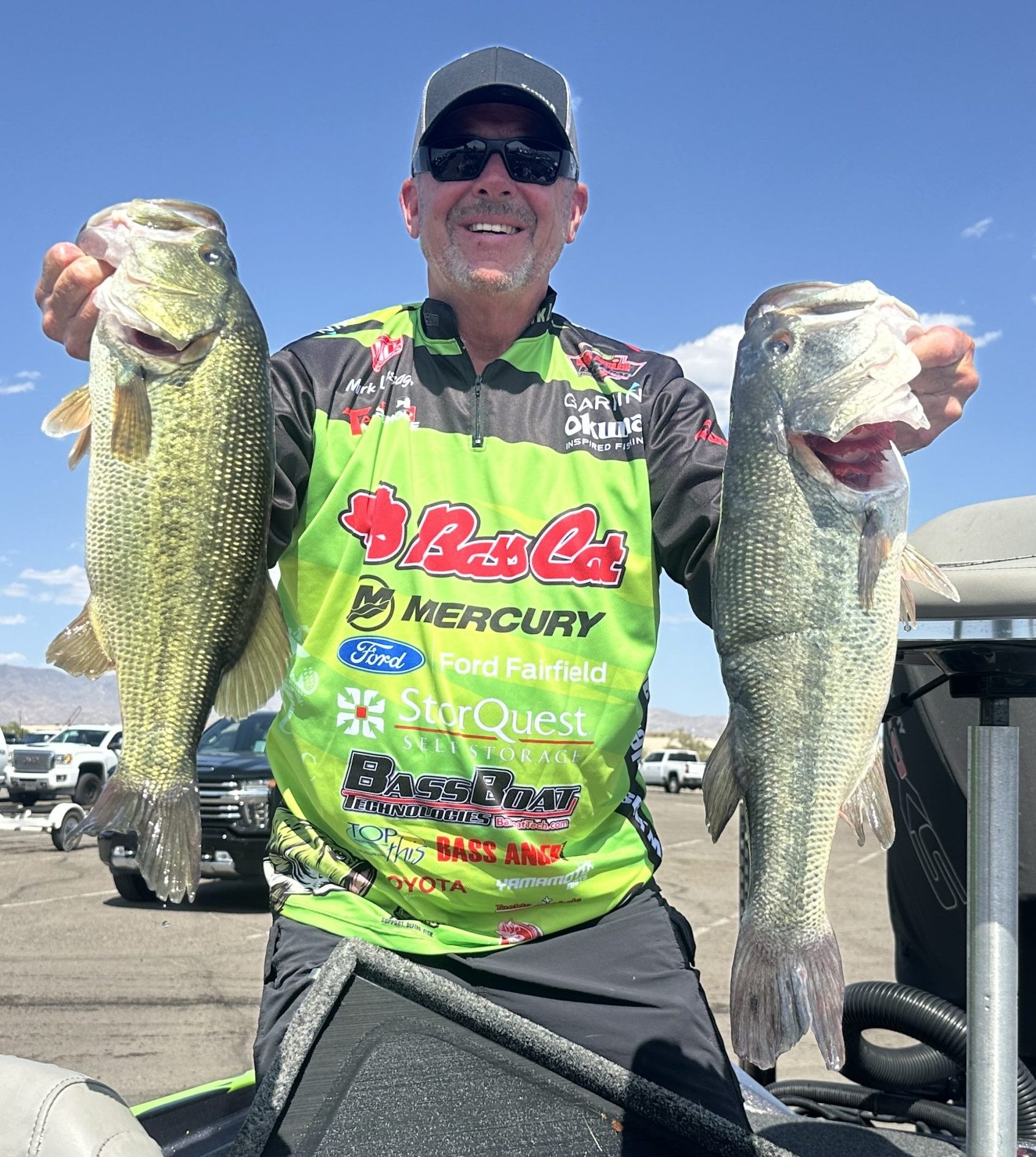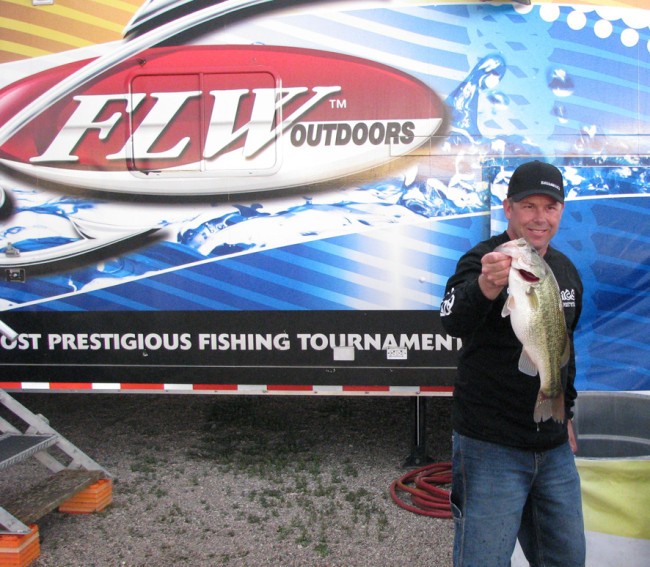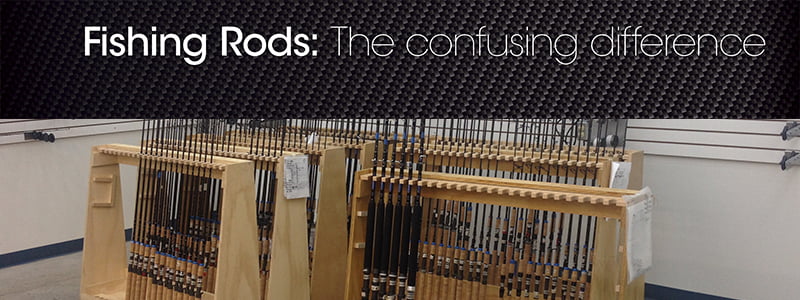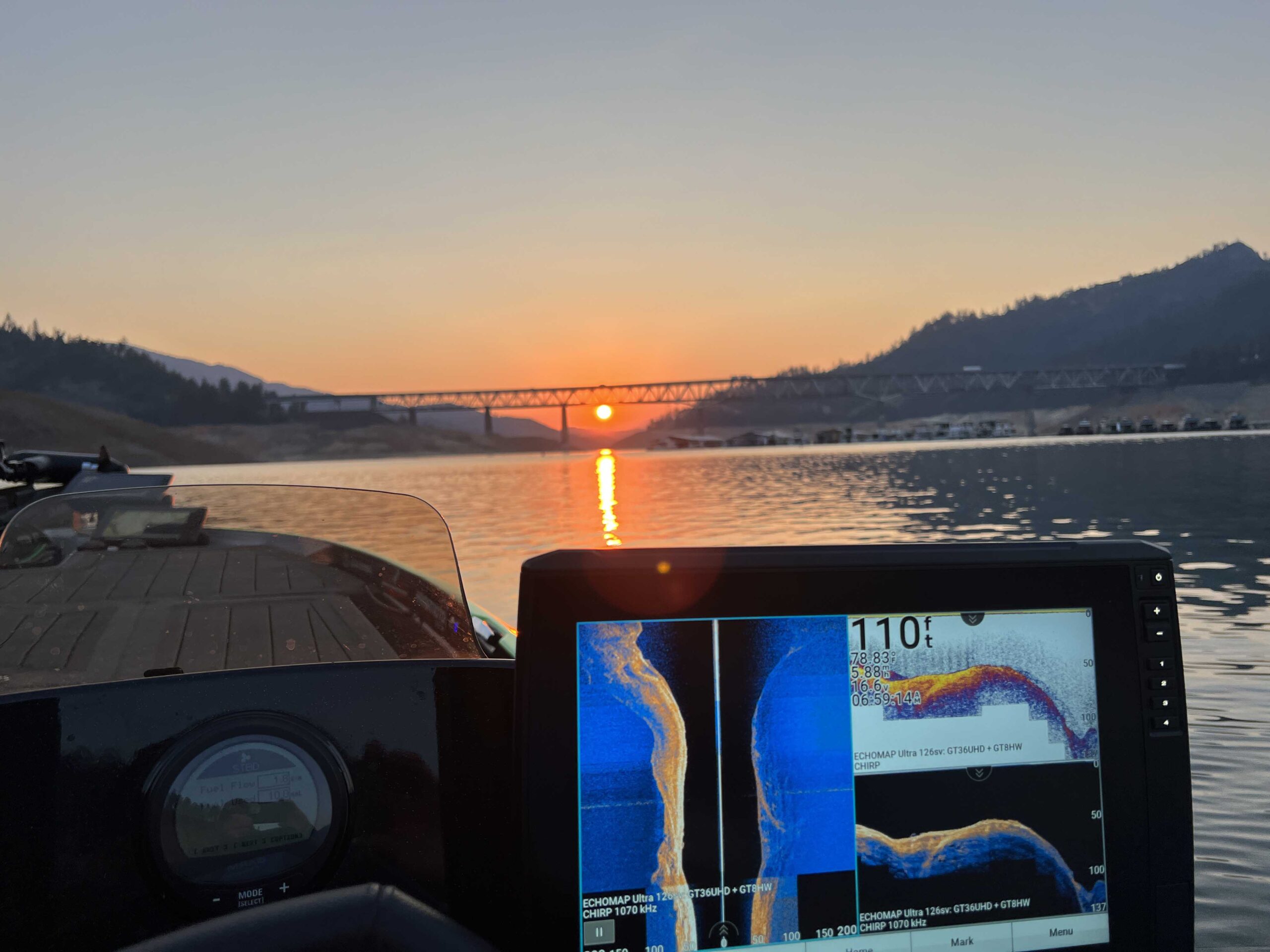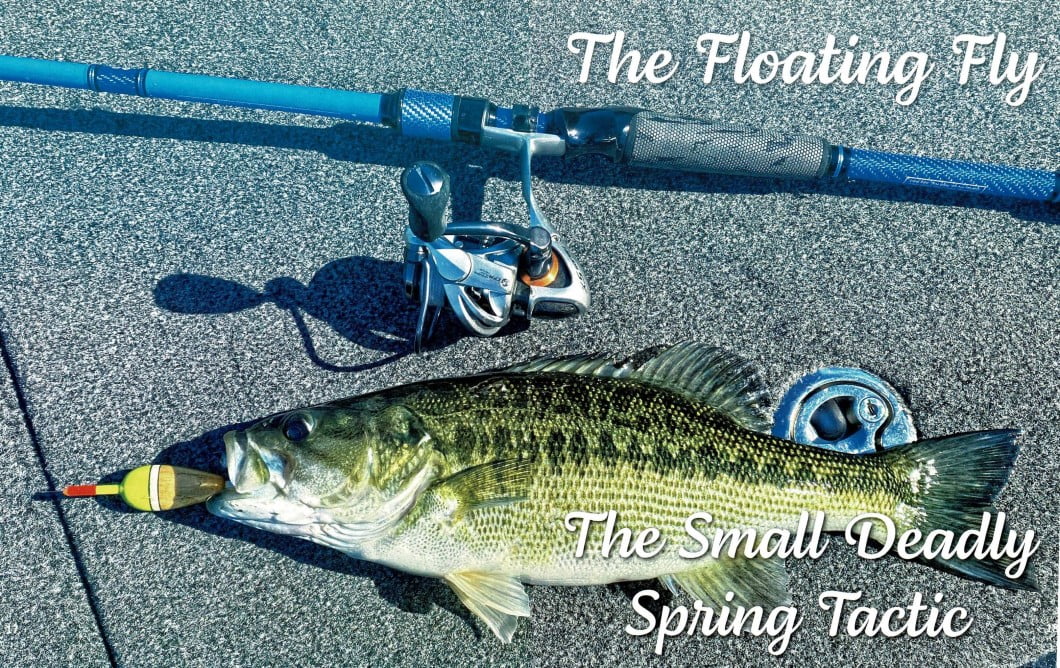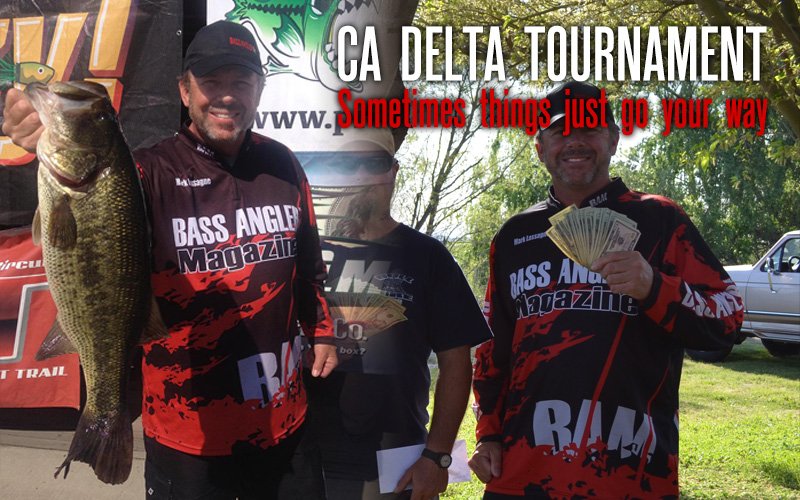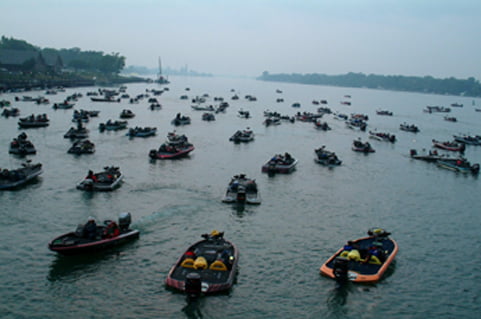
By Mark Lassagne
- What is a bass tournament?
- What types of tournaments are there?
- What is a draw?
- What skills do I need?
- How do you get into fishing tournaments?
- Do I need a boat?
- What type of equipment does my boat need?
- How much does it cost?
- How much can I win?
- How much tackle and how many rods should I bring?
It’s an event where anglers compete (fish) against one another during an allotted period of time (usually 8 hours) for cash and or prizes. Tournaments typically start at first light and last from 6 to 10 hours, depending on the time of the year and the organization holding the event. The angler’s or team’s goal for the competition is to end the day with the heaviest limit (limit is usually 5 fish) of fish. Depending on how many days the event is, the angler with the heaviest weight for the day or total number of days wins. For example, angler or team A weighs in 15 pounds on day one and angler (or team) B weights in 10 pounds, angler or team A is in the lead by 5 pounds. Then, on day two, angler (or team) A weighs in only10 pounds and angler B weighs in 16 pounds. Angler A now has a total weight of 25 pounds and angler B 26 pounds angler B wins the event. During the day, each angler will catch as many fish as they can. After the anglers reach their limits, they can then “cull” which is replacing the smallest fish with a bigger one. The fish are kept alive in a tank called a livewell (located in the rear of the boat) which is full of water and the water is aerated to keep the fish alive. Penalties occur for weighing in a dead fish. The fish can only be caught on artificial baits using a rod and reel in a sporting fashion.
What type of tournaments are there?
Team Event: You and a partner pair up using your own boat to compete against all other team anglers in the event. Most of these are held by tournament circuits and, in most cases, require memberships. Many of the standard team events are divided up into regions where you compete against other anglers in your region. Many circuits have an end of the year championship where you would compete against other teams from other regions.
Amateur Team or Future Pro team: You and a partner pair up using your own boat to compete against all other anglers in your class, different circuits a have different rules. Most teams of this style have limitations i.e. no person that has won over a certain dollar amount for one event or a year, no anglers having a boat sponsor, no guides etc. can compete, making it more competitive for the beginning angler. (See the rules for the specific circuit you plan to fish). These teams many also split into regions with a year end championship event.
Super Team: Same as a team event except they are a one-time shot, most of these events are open to all, not requiring a membership. Super team events usually have a higher entry fee along with a higher payback. These type events also may draw the more experienced anglers.
Variety Teams: Couple teams, Evening event, father & son teams etc. are designed as fun events without as much competition as with a standard team event.
Charity Teams and Special Events Teams: Standard team events with a portion of the proceeds going to a charity, memorial fund, bass club, church, etc.
Pro/Am: Pro Am event is a tournament where a professional angler draws an amateur angler and they fish together for the day. Then the next day, each pro angler draws another partner and fishes the next day. Draws are determined by the circuit putting on the event. Pros fish against pros and amateurs fish against amateurs. The prizes are separate. Some circuits have shared weight; where the Pro and the Am weigh their fish together, they essentially fish as a team. Other circuits, the Pro and Am, have to fish for their own fish, not share weight, the Pro and the Am weigh-in separately.
Points: Pro/Ams, standard, Amateur or Future Pro team events are grouped per region. They each have a points system in which you can qualify for the end of the year championship. This end of the year tournament is usually a no entry fee event with cash and sometimes a new boat offered as prizes.
What is a Draw? Each tournament has a meeting of some kind. The bigger the event, the bigger the meeting. TIP: Be on time. Some circuits penalize you for being late. Most Pro/Am events have a meeting the evening prior to the start day and at the meeting they go over the necessary information, rules, off-limits areas, sponsors of the event, start times, official time, etc. At the end of the meeting they have a draw where they pair up a professional angler with an amateur angler, most circuits will now text you with your partners information. Then you’ll meet and discuss the next day’s plan with your paired partner. It’s important to ask questions so you know where to meet, what time and what equipment to bring. Find out what methods are being used so you can keep your rods and tackle to a minimum.
What Fishing Skills Needed: You don’t have to have any fishing skills to enter an event. There are no set requirements. But it would be not be wise to enter an event without the proper skills. This is only a guideline of the skills needed for each of these events types.
Pro/Am Amateur Level: For the “Am” the more skills possessed, the better. But the basic skills recommended are competent casting. Being able to flip, pitch and cast accurately are essential. Good knot typing skills. The ability to work basic baits (spinnerbaits, crankbaits, jigs, worms, topwater). Most times, the Pro will help you with different techniques. If you’re a good caster and a tie a good knot, you’ll be ok. It helps to be a good listener too.
Team Events: If you a beginner you may want to start at the amateur team level. You will want to have basic skills the same as an Am angler. At this team level, you will need to be able to find and catch fish. Unlike the Am angler, either you or partner will need a boat and at least some ability to find fish. Many of these amateur events have seminars before the event start to help you become more familiar with the lake you’re competing on. As you progress, you may want to go to the next level, standard teams. These events have no requirement or restrictions, so you may compete against some top anglers.
Pro/Am Pro Level: To date, the only restrictions we know of are to have boat rigged properly and to pay an entry fee that is substantially higher than the amateur. But, at this level, one who doesn’t posses the necessary skills will not finish well. The pro angler needs to have the ability to fish most any bait competently. He needs the skills to find fish on most any body of water any time of year under any weather conditions. Be able to run a boat in most any situation using the big motor or the trolling motor. The pro angler needs to be prepared. Look, act and be the “PRO” to set the example for the amateur.
How Do I Get Into Fishing Tournaments: Many anglers start at the club level then work up from there. Most of the big name pros have been in a bass club at one time or another. Check with your local tackle shop for a bass club in your area. If you don’t want to go the bass club route, Pro/Am events are a great way to start. You will learn in leaps and bounds. You may even draw a big name pro, but don’t be discouraged if you don’t. Please don’t lose sight of the reason you’re fishing as an amateur, and that is to learn.
Do I Need a Boat?: Yes and No, yes if you want to fish as a pro in a Pro/am or fish teams in your own boat, otherwise you can find a partner that has a boat and fish together. If you have never owned a bass boat, it is recommended that you fish a few Pro/am events. You will see how many boats ride, handle and fish. Also, if you’re interested in a boat you can, after the event, ask a pro to take you for a demo ride. Many pros have boat sponsors and are happy to help get you into their manufacture’s boat.
Boat Equipment: Most bass boats come pre rigged with the necessary equipment. But if not, you will at least need to have: A kill switch that attaches to your body so the boat will shut off if you fly out. Running lights and you will have to have a t least one live well that can be filled with water and have an aerator. The boat must be at least 13 feet long with a 25 horsepower engine. (Check the rules for the circuit you wish to compete in)
How Much Does it Cost?: Each event has a different fee. Amateur team events are usually are $75-150 per team, plus options. Standard Teams run form $125-200 and super teams form $150-300. Special events are from $125-250. Regional Pro/Ams are $300-500 for the pro and $150-300 for the Am. National Pro/Am’s are $600-3,250 for the pro and $300-1000 for the Am. Many circuits have option pots for big fish and also other options that pay back in different categories. Option pots often pay back 100% of the money received. The pay backs for other events range from 75% to over 100% depending on the event and sponsor participation. Sponsors will often kick in prizes that increase the payback.
How Much Can I Win? Every event has a prize for the winner and each event is different. Most team events are a cash payback of near 80% of the entry fee going to 20% of the field. I.E. If there were 100 boats in the event at $100 each, this would total $10,000. At an 80% payback, it would be $8,000 paid out to the top 20% or in this case, the top 20 finishers. The remaining 20% of the entry fee is used to pay expenses and a portion usually goes toward the end of the year championship. This is only an example since each circuit pays back different percentages. Pro/Ams many times will have bigger prizes for the top finisher; the top prize in a Pro even can be $30, 40, 50 or even over $100,000. Pro events are often more than 100% payback, including prizes given by circuit sponsors (i.e. new boat and motor). For the Am side, it is usually a cash prize paid out, for both sides the payout is usually to the top 20% to 30% of the field. Options are another way to increase how much you can win, options usually payback 100% of the money received. There is usually a big fish option that pays to the angler with the biggest bass. Another common option pays the top 5 anglers in the option pot. Other circuits have some pretty creative options, check with the circuit that you want to fish.
What Kind of Equipment Do I Need? At least 3 rods and reels are recommended, spinning or bait casting reels, whichever you are most comfortable with. Pros usually carry 10-20 rods and reels pre-rigged. For the back seater (Am) five rods would allow you to keep a good assortment of baits rigged without too much clutter. Many circuits will limit an amateur to seven or fewer rods. You should also have a good array of tackle. One tackle bag is recommended. Don’t bring so much stuff, you are fumbling around. The local tackle dealers are always glad to help; you can also ask a pro to give you suggestions. Other personal items you will need 2 hats (they get lost easily), life jacket, rain gear, adequate clothing, sunscreen, water, snacks or an easy to eat lunch. An often forgotten item is a culling system; at least bring enough colored clips to identify your fish and a current fishing license issued from the state you are competing in.
Since writing this article I see things that can be added and I will make some modification as time goes on.
See more and learn more with articles like this in the Bass Angler Magazine. Order a copy or subscribe today at www.bassanglermag.com
Hello! My name is Mark Lassagne (luh-SAYN). I live in Dixon, California and proudly served our great nation as a US Marine. As a competitor, I love tournament bass fishing and have had some outstanding success competing up and down the West Coast. Besides tournament fishing, I own and run Bass Angler Magazine – a nationwide publication focusing on the how-to aspects of bass fishing. Follow Mark on Facebook or Instagram
